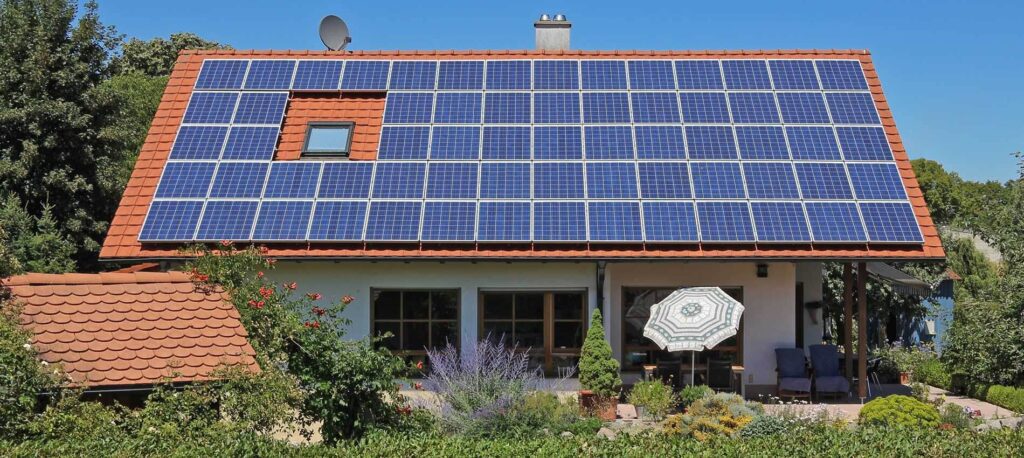With rising electricity bills and growing awareness about clean energy, more homeowners and businesses in India are switching to rooftop solar systems. But one common question remains:
“How much can I actually save with rooftop solar?”
In this blog, we’ll break down real savings, cost vs. benefit, and how rooftop solar can pay for itself — all explained in simple language, with up-to-date numbers for 2025.
What Is the Average Monthly Savings with Rooftop Solar?
On average, Indian households using 3 kW to 10 kW rooftop solar systems can save 2,000 to 10,000 per month on electricity bills, depending on their usage and region.
Here’s a breakdown of potential savings:
| System Size | Monthly Savings (Approx.) | Yearly Savings | Payback Period |
|---|---|---|---|
| 3 kW | 2,500 – 3,000 | 36,000 | 5–6 years |
| 5 kW | 4,500 – 5,000 | 60,000 | 4–5 years |
| 10 kW | 9,000 – 10,000 | 1,20,000 | 3–4 years |
Note: These numbers may vary based on sunlight availability, tariff rates, and your energy consumption pattern.
How Does Rooftop Solar Save You Money?
Rooftop solar systems generate electricity using sunlight. This reduces the amount of power you need to buy from your electricity provider. In many states, net metering allows you to send excess power back to the grid and receive credits.
So, you save in two ways:
- Lower electricity bills
- Credits from net metering
Rooftop Solar for Homes vs. Businesses
Homes: Ideal for 2–6 kW systems, which can power lights, fans, TVs, washing machines, and even ACs.
Shops/Offices: Typically install 5–10 kW or higher for air conditioners, lighting, and computers.
Factories/Warehouses: Can go from 10 kW up to 100 kW+ for heavy equipment and 24/7 operations
How Much Does Rooftop Solar Cost in 2025?
With government subsidies under schemes like PM Surya Ghar Yojana, costs have dropped significantly.
Approximate cost after subsidy:
| System Size | Market Price (₹) | Subsidy (₹) | Final Cost (₹) |
|---|---|---|---|
| 3 kW | 1.8 lakh | 78,000 | 1.02 lakh |
| 5 kW | 3 lakh | 78,000 | 2.22 lakh |
| 10 kW | 5.5 lakh | 78,000 | 4.72 lakh |
You recover this investment within 4–6 years through bill savings.
Bonus: Environmental Benefits of Rooftop Solar
A 1 kW system can reduce 1.5 tons of CO₂ emissions per year
Equivalent to planting 60–70 trees annually
Helps in building a sustainable future
Maintenance Costs? Very Low!
- Solar panels need cleaning once every 1–2 months
- No moving parts = fewer breakdowns
- Inverter checkups yearly
- AMC (Annual Maintenance Contract) optional, low-cost
Overall maintenance cost per year: ₹2,000 – ₹3,000 (approx.)
ROI: When Does Solar Pay for Itself?
Depending on your location, system size, and subsidy received:
- Typical Payback Time: 4 to 6 years
- After that: 100% free electricity for up to 20+ years
- Panel life: 25 years with 80–90% efficiency even after 20 years
Frequently Asked Questions (FAQs)
1. How long does it take to install rooftop solar?
Usually 5–10 days including documentation and net metering approval.
2. Can I run an AC on solar?
Yes. A 5 kW system can run an AC, fridge, washing machine, lights, and fans simultaneously.
3. Will solar work during power cuts?
Only hybrid or off-grid systems with batteries work during power cuts. Grid-tied systems shut down for safety.
4. Is rooftop solar worth it in cloudy areas?
Yes. Solar still works in indirect sunlight — though slightly lower in efficiency. In India, most regions get enough sunlight year-round.
5. Do I need government approval?
Yes, especially if you want to claim subsidy and net metering benefits. Most solar companies handle this for you.
Conclusion:
Rooftop solar is one of the smartest financial and environmental decisions you can make in 2025. With proper sizing, government subsidies, and rising electricity prices, it pays for itself in a few years — and continues saving you lakhs over its lifetime.
If you’re ready to reduce your electricity bills by up to 10,000/month, now is the best time to go solar.

